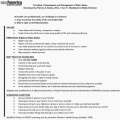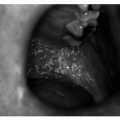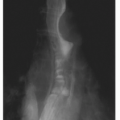Office-Based Caregiver Support
Jane Marie Thibault
James G. O’Brien
CLINICAL PEARLS
All patients should be asked, “Do you have caregiving responsibilities for someone who is chronically ill or disabled?”
Persons who accompany patients to an office visit should be asked, “What caregiving services do you provide for my patient?”
To help caregivers realize the effects of caregiving on their health, invite them to complete a “Caregiver Selfassessment Questionnaire.”
Have readily available in your office local, state, and national resources related to aging and caring for older adults.
Encourage caregivers to join a caregiver support group.
Develop a professional referral network of local geriatric social workers and counselors, the Alzheimer’s Association, and the local Agency on Aging.
Enable caregivers to realize that they are an essential part of your patient’s health care team.
Fading Memory
My friend sits in the corner. In reverie, he is reminiscing with his past Trying to find his way through a vast Wasteland with few remaining markers.
It is hard watching the lights of cognition go out, one by one, breaking our connection. He is leaving me, his mind slipping away from our reality, back toward the security of the womb.
While the threads, holding him within my world, Gradually unravel, is his mind truly blank? Or is he slowly entering the Elysian Fields with A new existence that he cannot share with me?
John I. Coe The Pharos/Summer, 20041
INTRODUCTION: WHY SHOULD PHYSICIANS BE CONCERNED ABOUT CAREGIVERS?
The health care delivery system is increasingly dependent on family and other volunteer caregivers to provide a variety of services to ill and frail elders (see Table 3.1). Although they are trained to assume responsibility for individual patients,2 physicians are discovering that they are increasingly called upon to interact with caregivers of older adults in two significant ways. First, physicians who care for older adults, especially frail elders, often find themselves actively involved in communicating with, supporting, and instructing their patients’ caregivers, recognizing and supervising them as a significant (yet often unacknowledged) part of the health care team. Second, primary care clinicians frequently treat midlife and older adult patients who have assumed responsibilities for the care of ill elders and are subjected to the documented stresses of the caregiving situation.
Whether the person is the physician’s patient or the relative of the patient, the physician has a vested interest in helping the caregiver stay physically and emotionally healthy throughout the period for which he or she has caregiving duties.
The “vested interest” lies in the fact that caregivers play a significant role in the medical care of ill elders, especially those with dementia.3 Because of caregivers’ proximity to their patients, often living in the same home, physicians depend on them to observe and report patients’ change over time—for diagnostic, treatment, and management purposes. Caregivers are increasingly required to implement, oversee, supervise, and assist with medical interventions such as administering medication, including injections; providing wound care; monitoring blood sugar levels; arranging transportation for medical visits; and providing personal care, all of which are not covered by medical insurance.
Providing daily care for another, in addition to working outside the home and/or managing his or her own life, involves a great deal of extra, time-consuming work, which can create a “dual life” for the caregiver. This dual life, which is often very stressful, can have negative effects on the caregiver’s physical and emotional health. Inevitably, when a caregiver’s health declines and the ability to care for the patient fails, the latter will be negatively affected. Ham et al. state, “The good caregiver can be the therapeutic tool to maintain optimal function despite (patient) disability. The challenge is to ensure that the caregiver is operating optimally and that the more dependent phase of the patient’s illness can be postponed for as long as possible.”4
In an attempt to meet the challenge of caring for the caregiver, the American Psychiatric Association, the American Association for Geriatric Psychiatry, The American Geriatrics Society, and the American Medical Association (AMA), have developed guidelines and recommendations for working with caregivers, especially for those caring for persons with dementia.5 These guidelines are sorely needed because the older population’s need for care is rising steadily. Statistics indicate that as the population of people aged 65 and older expands, the prevalence of functional disability and the need for help in the performance of activities of daily living also increases.6 Most of the help required is provided by informal caregivers—family members, friends, and neighbors who offer primarily voluntary services to frail and chronically ill older adults living in the community. Their numbers are significant and growing. As long ago as 1988, a Duke University survey of 602 randomly selected family practice patients aged 40 years and older found that 25% (153) of the patients had caregiving responsibilities for noninstitutionalized relatives.7
TABLE 3.1 CHARACTERISTICS OF THOSE PROVIDING INFORMAL CARE FOR OLDER ADULTS (NATIONAL CENTER FOR CAREGIVING, 2004) | |||||||||||||||||||||||||||||||||||||||||||||||||||||||||||||||||||||||||||||||||||
|---|---|---|---|---|---|---|---|---|---|---|---|---|---|---|---|---|---|---|---|---|---|---|---|---|---|---|---|---|---|---|---|---|---|---|---|---|---|---|---|---|---|---|---|---|---|---|---|---|---|---|---|---|---|---|---|---|---|---|---|---|---|---|---|---|---|---|---|---|---|---|---|---|---|---|---|---|---|---|---|---|---|---|---|
| |||||||||||||||||||||||||||||||||||||||||||||||||||||||||||||||||||||||||||||||||||
In contrast with the responsibility for provision of normal child care, which decreases over time and is generally planned and expected, the combination of
increasing dependency of the ill elder and caregiving situations may last over many years, and are unplanned and at times unexpected. As a result, caregiving to elders can engender greater stress and spark stress-related disorders. Behavioral problems and incontinence of the patient; the strenuous physical labor involved in bathing, ambulating, dressing, and feeding; increased housework; sleep deprivation; the need to defer personal goals; financial difficulties; and family conflicts about care are just a few of the most common stressors experienced by care providers. Additionally, anticipation of increasing burden as the patient’s frailty increases is a negative factor. Because caregiving affects both physical and mental health, investigators recommend that “providers should routinely ask about caregiving responsibilities when taking a middle-aged or older individual’s medical history.”7
increasing dependency of the ill elder and caregiving situations may last over many years, and are unplanned and at times unexpected. As a result, caregiving to elders can engender greater stress and spark stress-related disorders. Behavioral problems and incontinence of the patient; the strenuous physical labor involved in bathing, ambulating, dressing, and feeding; increased housework; sleep deprivation; the need to defer personal goals; financial difficulties; and family conflicts about care are just a few of the most common stressors experienced by care providers. Additionally, anticipation of increasing burden as the patient’s frailty increases is a negative factor. Because caregiving affects both physical and mental health, investigators recommend that “providers should routinely ask about caregiving responsibilities when taking a middle-aged or older individual’s medical history.”7
Frequently those offering help are elderly themselves—women and men who have needs of their own, which they often neglect.
Schulz and Beach, coinvestigators of the Caregiver Health Effects Study, have found that “family caregivers perform an important service for society and their relatives… at considerable cost to themselves…. Some caregivers are at increased risk for serious illness. … Caregivers who report strain associated with caregiving are more likely to die than noncaregiving controls.”8 Informal caregivers often experience and describe their own health as being poorer than that of their noncaregiving peers.9 Almost all the studies on caregivers’ mental health indicate that they experience a higher level of depressive symptoms than persons not involved in care.
DEMOGRAPHICS OF CAREGIVING: WHO ARE CAREGIVERS? WHAT ARE THEIR CHARACTERISTICS?
Long-term care may be defined as the provision of services that are required over an extended period, usually lasting for the remainder of a person’s life. Until the middle of the 20th century, most long-term care services were provided by family members. With the enactment of the Medicare and Medicaid programs in the mid-1960s, the expanded funding for health care needs of older adults enabled the development of a variety of institutional modes of care. The current continuum of long-term care comprises informal and formal home-based services; adult day care; assisted living facilities; personal, intermediate, and skilled nursing home care; and hospice care. Because of the availability of such a variety of formal services, there may be an impression that most older adults are cared for either in institutional settings or in their own homes by professional aides or health care providers.
This is not the case. Informal caregivers continue to provide an enormous proportion of caregiving services, especially for patients in the early and middle stages of chronic illness. According to the statistics compiled by the Family Caregiver Alliance of the National Center for Caregiving (2004),10 there are approximately 1.6 million persons living in 17,000 nursing homes in the United States. In the community, however, there are approximately 52 million informal and family caregivers providing services to individuals aged 20 and older who are ill or disabled.
When caregiving responsibilities are sequential, duties may continue for many years, especially for women. For example, after providing years of service to her ill father, a daughter may then have to care for her mother as she becomes frail, after which she may care for her in-laws and then her ill husband.
STYLES OF CAREGIVING
Caregivers may be characterized by the quality of their association with the person(s) for whom they are providing care. The fact that a person is designated a caregiver by the patient does not mean that she or he is providing good or even adequate care. Unfortunately, although they are in the minority, poor or even abusive caregivers exist. On a continuum of quality of involvement, caregivers may be classified as follows:
Fully engaged caregivers in partnership with the patient and health care team
Adequate caregivers
Providers of minimal care
Noncooperative caregivers
Neglectful caregivers
Overinvolved caregivers
Abusive caregivers
Seriously ill or heavily burdened caregivers (who are, themselves, a focus of concern).
It is essential that the physicians consider the baseline quality of service that a caregiver can reasonably provide. They must also keep in mind that the capacity to provide care can fluctuate with the person’s biopsychosocial and employment situations and demands.
EFFECTS OF CAREGIVING: WHAT HAPPENS TO HEALTH?
Persons who provide services to older adults may experience both satisfaction and burden in their efforts to give care. Much of the early research focused on the concept of burden, which refers to “the physical, psychological or emotional, social, and financial problems that can be experienced by family members caring for impaired older adults.”11 The gathering evidence, in addition to the knowledge of prominent national figures who have succumbed to Alzheimer disease, such as President Reagan and actor
Kirk Douglas, have made the negative effects of caregiving so widely known that a survey of >1,000 adults sponsored by the Alzheimer’s Association in October 2004, revealed that “Americans are as afraid of becoming an Alzheimer caregiver as they are of getting the disease itself.”12 The results of this survey led to the proposal of S. 2533/H.R. 4595 to the 108th Congress. Known as the Ronald Reagan Alzheimer’s Breakthrough Act of 2004, this act will provide assistance and tax relief to caregivers if passed.13
Kirk Douglas, have made the negative effects of caregiving so widely known that a survey of >1,000 adults sponsored by the Alzheimer’s Association in October 2004, revealed that “Americans are as afraid of becoming an Alzheimer caregiver as they are of getting the disease itself.”12 The results of this survey led to the proposal of S. 2533/H.R. 4595 to the 108th Congress. Known as the Ronald Reagan Alzheimer’s Breakthrough Act of 2004, this act will provide assistance and tax relief to caregivers if passed.13
CAREGIVING RESEARCH: WHAT DOES IT INDICATE?
The significance of caregiver burden, the measurement of its correlates, and the development of interventions to ameliorate burden have been subjects of gerontological research for more than a quarter of a century. As early as 1979, labeling spouses of disabled elderly men as hidden patients, Fengler and Goodrich warned that the process of caregiving placed the caregiver at risk for impairment of physical, emotional, and social well-being.14
Evidence strongly suggests that caregiver burden has dramatic negative effects on various aspects of health and that older caregivers are more negatively affected than younger ones.15 The previously mentioned Caregiver Health Effects Study investigated the impact of caregiving on elderly spouses. Results showed that caregiver participants who experienced strain had mortality risks that were 63% higher than those not experiencing strain or in noncaregiving control group situations. Although some of the caregiver situations included recipients with dementing disorders, dementia caregiving was not the primary focus in this study. Results of other studies indicate that caring for persons with dementing diseases causes even more strain on the caregiver. The most common symptoms of caregiver strain include anxiety, depression, greater use of psychotropic medication, and a negative self-rating of physical health.4
A longitudinal study of 86 caregivers and 95 comparison participants found that persons caring for patients with a high degree of behavioral disturbance and/or for those who were admitted to long-term care facilities experienced greater deterioration in their emotional and physical health status than control participants did.16 A Swedish study designed to investigate the consequences of living with a demented person found that spouses, not children, suffered from the highest levels of stress.17
Stay updated, free articles. Join our Telegram channel

Full access? Get Clinical Tree






